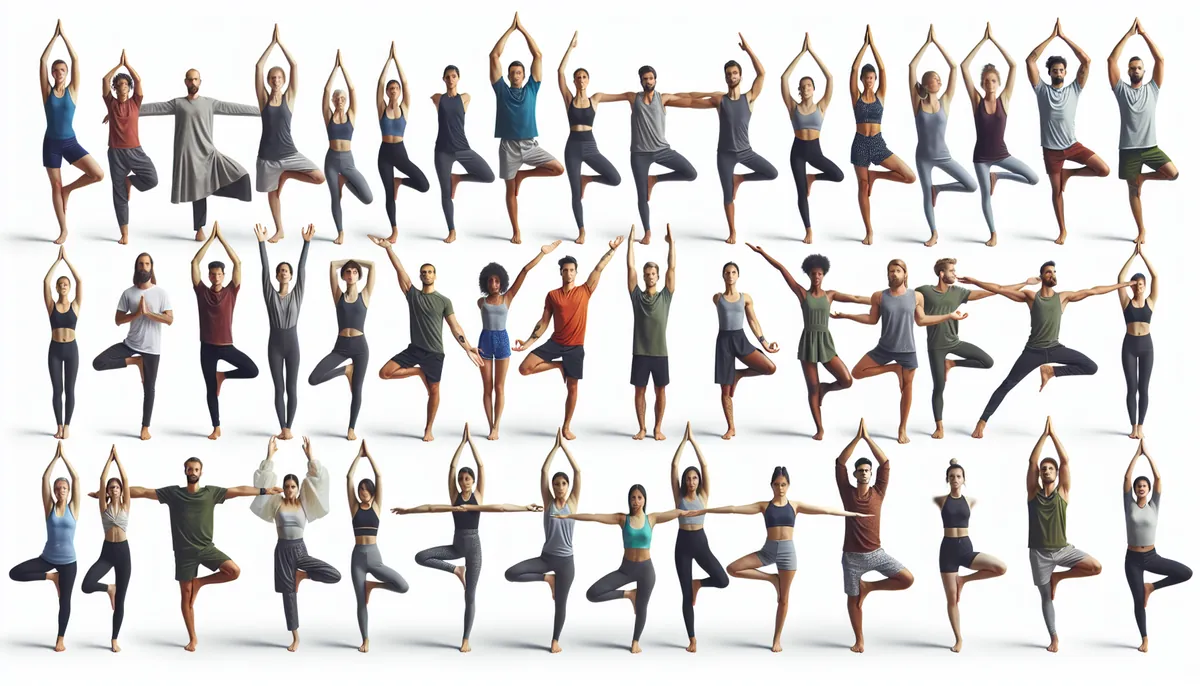Finding balance in yoga not only enhances physical stability but also boosts confidence and mind-body connection. In this guide, we’ll explore fundamental balance poses that can be integrated into any practice, whether you are a beginner or looking to refine your skills.
Understanding different balance poses is crucial because they help improve concentration, coordination, and stability. Integrating them into your routine can foster a deeper sense of body awareness, ultimately enriching your yogic journey.
Table of Contents
- Building Your Foundation with Basic Balancing Poses
- Advancing Your Balance: Warrior III (Virabhadrasana III)
- Perfecting the Pose: Eagle Pose (Garudasana)
- Enhancing Your Practice with Tips and Tricks
- Conclusion
Building Your Foundation with Basic Balancing Poses
The key to mastering balance poses is building a strong foundation. Tree Pose (Vrksasana) is a classic starting point. This pose encourages you to focus, find your center, and stabilize your standing leg.
How to Practice Tree Pose:
- Stand tall with feet hip-width apart.
- Shift your weight onto your right foot.
- Slowly lift your left foot, placing it on your right ankle, calf, or thigh – avoiding the knee joint.
- Bring palms together in front of your chest, or reach them overhead.
- Focus your gaze on a fixed point.
- Hold for several breaths, then switch sides.
Advancing Your Balance: Warrior III (Virabhadrasana III)
Once comfortable with basic poses, challenge yourself further with Warrior III. This pose builds strength in the standing leg, while enhancing balance and core activation.
How to Practice Warrior III:
- Start in a standing position, arms at your side.
- Step your right foot forward into a slight bend.
- Hinge at your hips, extending your left leg back and your torso forward, parallel to the mat.
- Extend your arms forward, in line with your ears, as you stabilize the pose.
- Keep your gaze downward, maintaining balance.
- Hold for five to ten breaths, and repeat on the opposite side.
Perfecting the Pose: Eagle Pose (Garudasana)
Eagle Pose is an effective way to entwine mental focus with physical equilibrium. This pose increases flexibility and strength in your legs and shoulders.
How to Practice Eagle Pose:
- Stand in Mountain Pose.
- Bend your knees slightly, lifting your left leg above your right knee.
- Hook the left foot behind the right calf.
- Extend your arms forward, crossing your right arm over the left.
- Bend elbows and place palms against each other, lifting elbows slightly.
- Hold your gaze forward, breathing deeply.
- Switch sides after holding the pose for a few breaths.
Enhancing Your Practice with Tips and Tricks
Integrating balance exercises beyond traditional poses can significantly aid your practice. Consider the following techniques:
- Practice on a softer surface: Practicing on a mat or grass rather than hard floors can challenge stabilizing muscles.
- Focus on alignment: Ensure that your supporting leg is rooted without locking the knee.
- Engage your core: Activating core muscles enhances overall balance control.
Conclusion
Balance poses in yoga offer an enriching experience, promoting not only physical stability but also mental clarity and focus. Experiment with various poses like the Tree, Warrior III, and Eagle Pose to uncover your potential.
For more inspiration, explore our Yoga for Grounding: Essential Poses for Balance and Stability article. Share your progress and insights as you embrace these foundational poses.
Reflect on these practices, and enjoy the journey of finding balance both on and off the mat. Whether you’re a beginner or an experienced practitioner, incorporating balance poses can serve as a powerful tool for growth and exploration.
